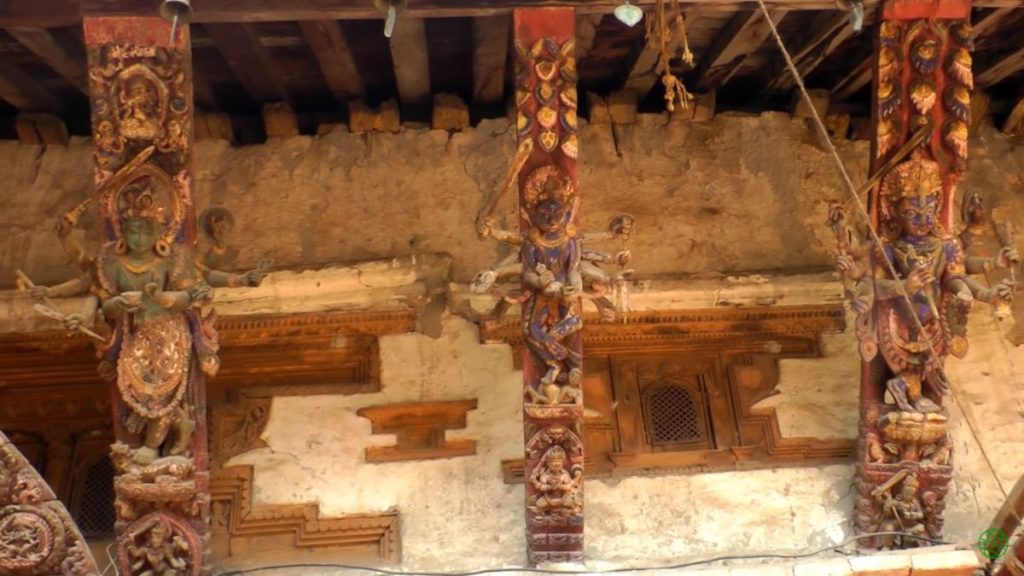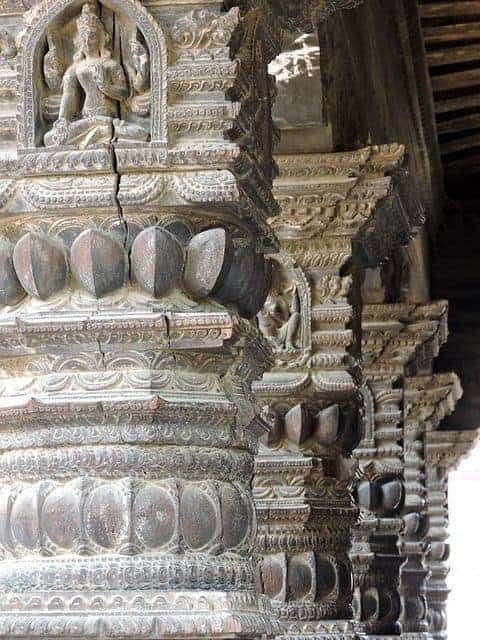Today we are discussing Historical Interior Design in Nepal and Newari traditional architecture in Kathmandu Nepal.
Even more detailed and expressive than stone and metal are the wood and ivory carving which grace the buildings of Nepal, on struts, pillars, beams, doors, windows, cornices, brackets, and lintels inside and outside temples and private homes.

The ivory windows of the Royal Palace in Kathmandu’s Durbar square are a well-known example of this art form, but countless others can be found in varying stages of repair and disrepair on the once-elegant Rana palaces and villas in Kathmandu.
One a walk through the back streets of Kathmandu’s Old Town, you can find windows peeking through the tail of a peacock, other grotesquely circled by skulls and a variety of suggestive and erotic motifs.
Newari Interior Design in Kathmandu

The Newaris established a large vocabulary including every component part and exact detail of the traditional carving. These medieval texts have been passed down through the generations and still serve as the instructional handbooks for today’s woodcarvers.
The skill of the Newar craftsman is seen in the absence of either nails or glue in his works. and the erotica that adorns the temples throughout the country leaves no doubt about the vividness of their artistic imaginations.
Given the Hindu philosophy that worships Shiva’s lingam the religious of old considered the sexual nature of such art and temple decoration profoundly significant. Interior Design in Nepal
Interior design in Kathmandu Building
Nepal’s history of terracotta craft stretches back to the third century BC, but in Kathmandu, it reached its glory during the sixteenth and eighteenth centuries.

Outstanding examples of friezes and moldings decorate the buildings from this era in the Kathmandu valley and can also be found in the region’s museums. Of particular note are the long bands of male and female figures, nagbhands, that stretch around some temples, depicting Hindu narratives and epics.
The main gateway of the Taleju temple in Hanuman Dhoka, Bhaktapur and Patn’s Mahabuddha and Maya Devi temple are outstanding examples of this art form.
Pottery- making has been practiced for over one thousand years in Nepal and some fine examples survive.
The pottery center of Kathmandu valley is Thimi, where potters turn out outstanding figurines, smoking pipes, lampstands, and flower pots.

